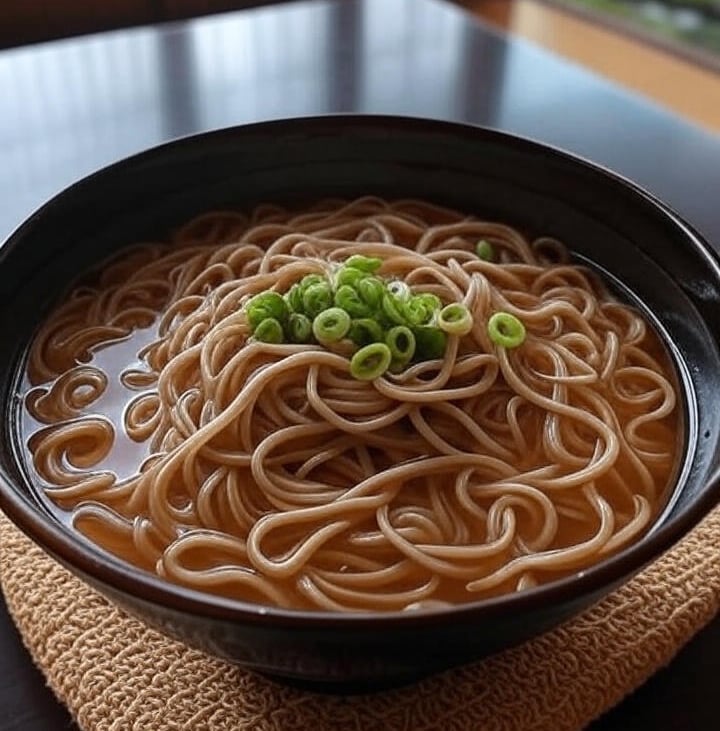Welcome to Noodles of Asia ! - A Woke Noodle Blog
Discovering Soba: A Journey into Japan’s Elegant Noodle Dish


Hey there, noodle enthusiasts! If you've ever savored a bowl of slender, nutty noodles, either warm in broth or chilled with a dipping sauce, you’ve likely experienced soba. These buckwheat-based treasures are a staple in Japanese cuisine, prized for their delicate texture and earthy flavor. Whether enjoyed hot during a crisp winter day or cold in the summer heat, soba offers a refined comfort. In this post, we’ll explore its origins, history, some fascinating facts, and a few famous recipes to inspire your next culinary adventure. Let’s dive in!
Origins and History of Soba
Soba noodles are believed to have originated in China, with buckwheat cultivation spreading to Japan around the 7th century during the Nara period (710–794). The technique of making soba from buckwheat flour likely arrived with Buddhist monks, who valued its simplicity and nutritional benefits. By the Edo period (1603–1868), soba became widely popular, especially in urban centers like Tokyo, where street vendors served it to laborers and samurai alike. Its versatility led to regional styles, and it even influenced dishes in Korea and Taiwan. Today, soba remains a symbol of Japanese tradition, with artisanal methods still practiced.
Interesting Facts About Soba
Soba isn’t just a meal—it’s a cultural treasure! Here are some intriguing tidbits:
Regional Variations Galore: Japan features diverse soba styles—Tokyo’s tanuki soba with tempura bits, Nagano’s shinshu soba with a robust buckwheat taste, and Okinawa’s unique soba with pork. Each region adds its own flair.
Noodle-Making Art: Handmade soba requires skill, with artisans rolling and cutting dough to achieve the perfect thinness, often using a blend of buckwheat and wheat flour.
New Year Tradition: Eating Toshikoshi soba on New Year’s Eve symbolizes longevity due to the noodles’ length, a custom dating back centuries.
Health Appeal: Soba is naturally gluten-free when made with 100% buckwheat and is rich in protein and fiber, making it a favorite among health-conscious eaters.
Cultural Rituals: In some regions, soba is served at funerals or celebrations, reflecting its deep-rooted significance in Japanese life.
These facts highlight soba’s evolution from a humble grain to a cherished culinary art.
Famous Soba Recipes
Soba’s charm lies in its versatility. Here are some iconic recipes, from comforting classics to creative twists. (Note: These are overviews—adjust to taste and check full recipes online for details.)
Kake Soba: Warm soba in a light dashi broth with soy sauce and mirin, topped with scallions—ideal for a quick, soothing meal.
Zaru Soba: Chilled soba on a bamboo mat, served with a cold tsuyu dipping sauce and garnished with nori—perfect for summer.
Tempura Soba: Hot soba broth with crispy shrimp or vegetable tempura, offering a delightful contrast of textures.
Toshikoshi Soba: Long soba noodles in a simple broth, eaten on New Year’s Eve to wish for a long life.
Kamo Soba: Warm soba with duck slices and a rich broth, a hearty specialty from certain regions.
Cha Soba: Green tea-infused soba, often served cold with a dipping sauce, adding a unique color and flavor.
For a hands-on experience, try making soba at home: Mix buckwheat flour with water, knead into a dough, roll thin, and cut into strands—patience yields the best results.
Wrapping It Up
Soba noodles are more than just food—they’re a link from ancient Chinese influences to modern Japanese culture and beyond, with endless variations to discover. Whether you’re craving a warm bowl on a chilly evening or a refreshing cold dish in warm weather, soba delivers. Next time you’re at a Japanese restaurant or in your kitchen, give one of these recipes a try. What’s your favorite soba style? Share in the comments—I’d love to hear! Until next time, happy slurping! 🍜
